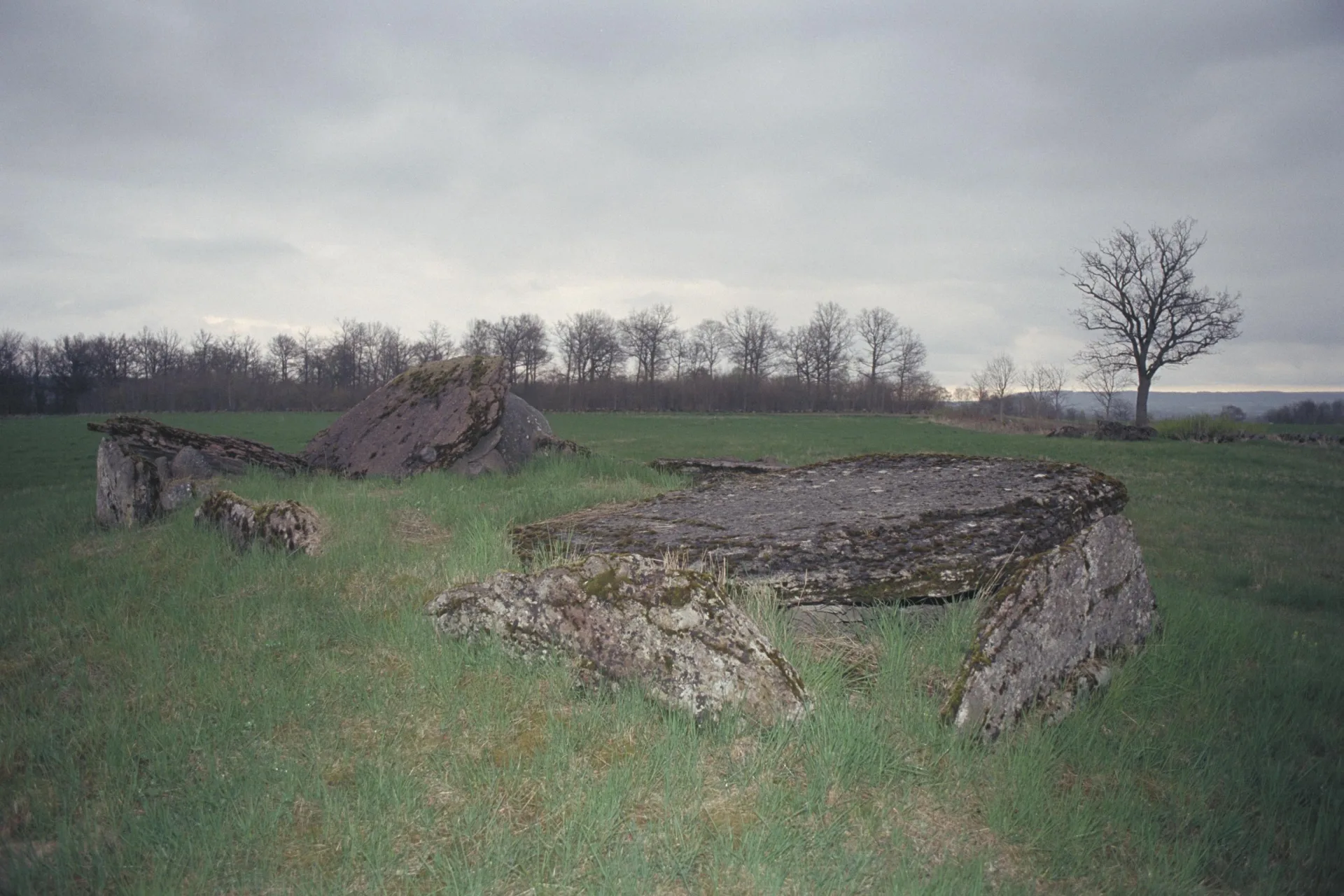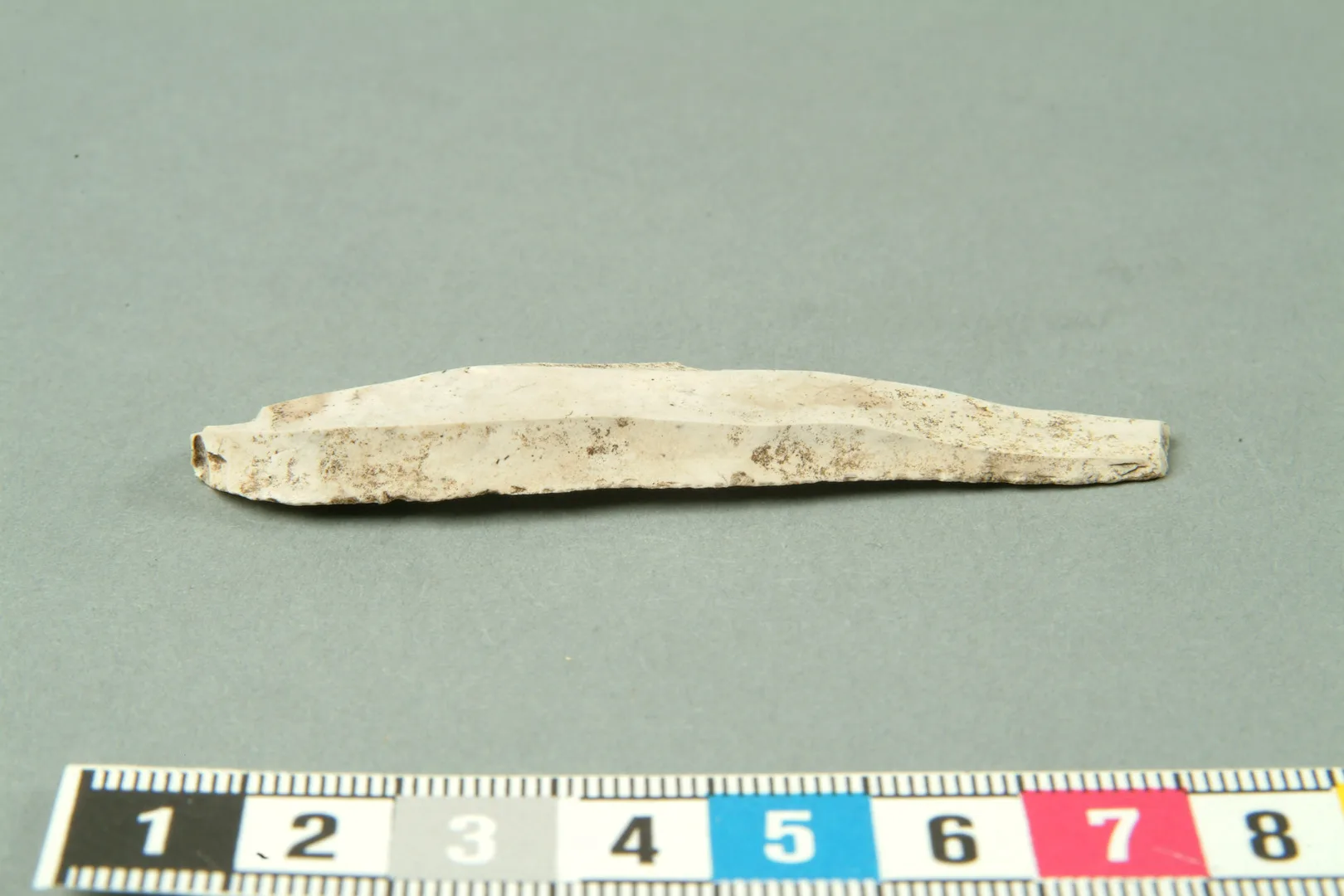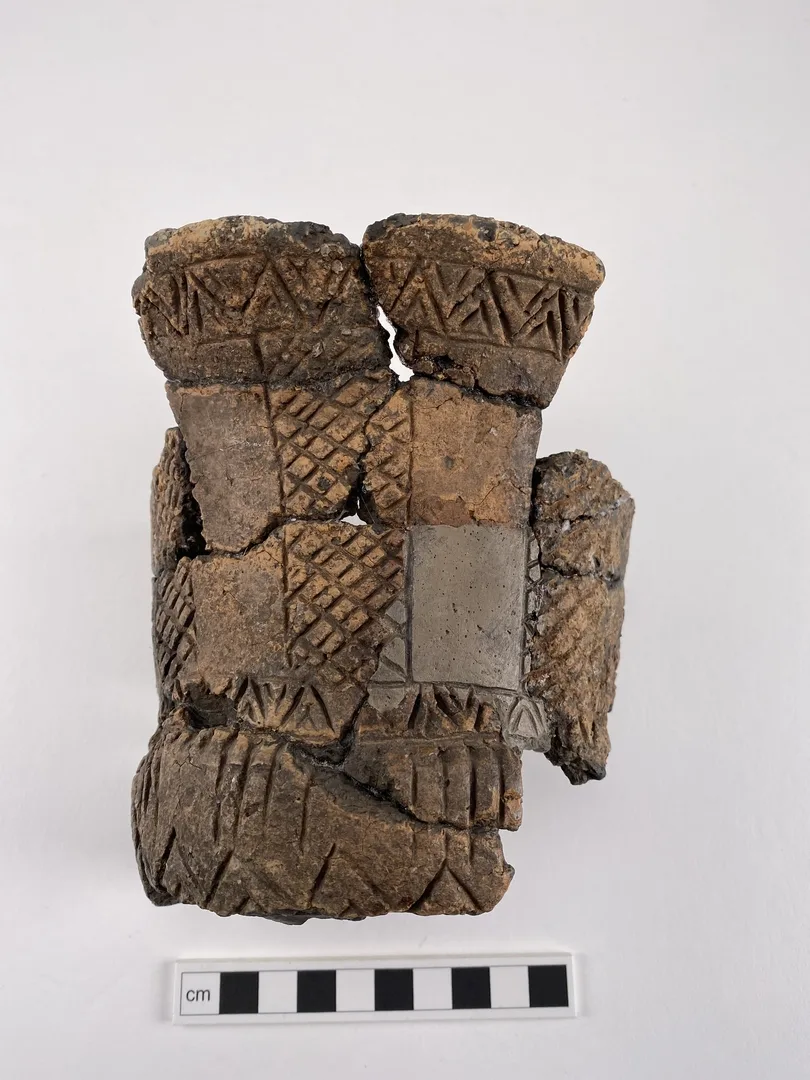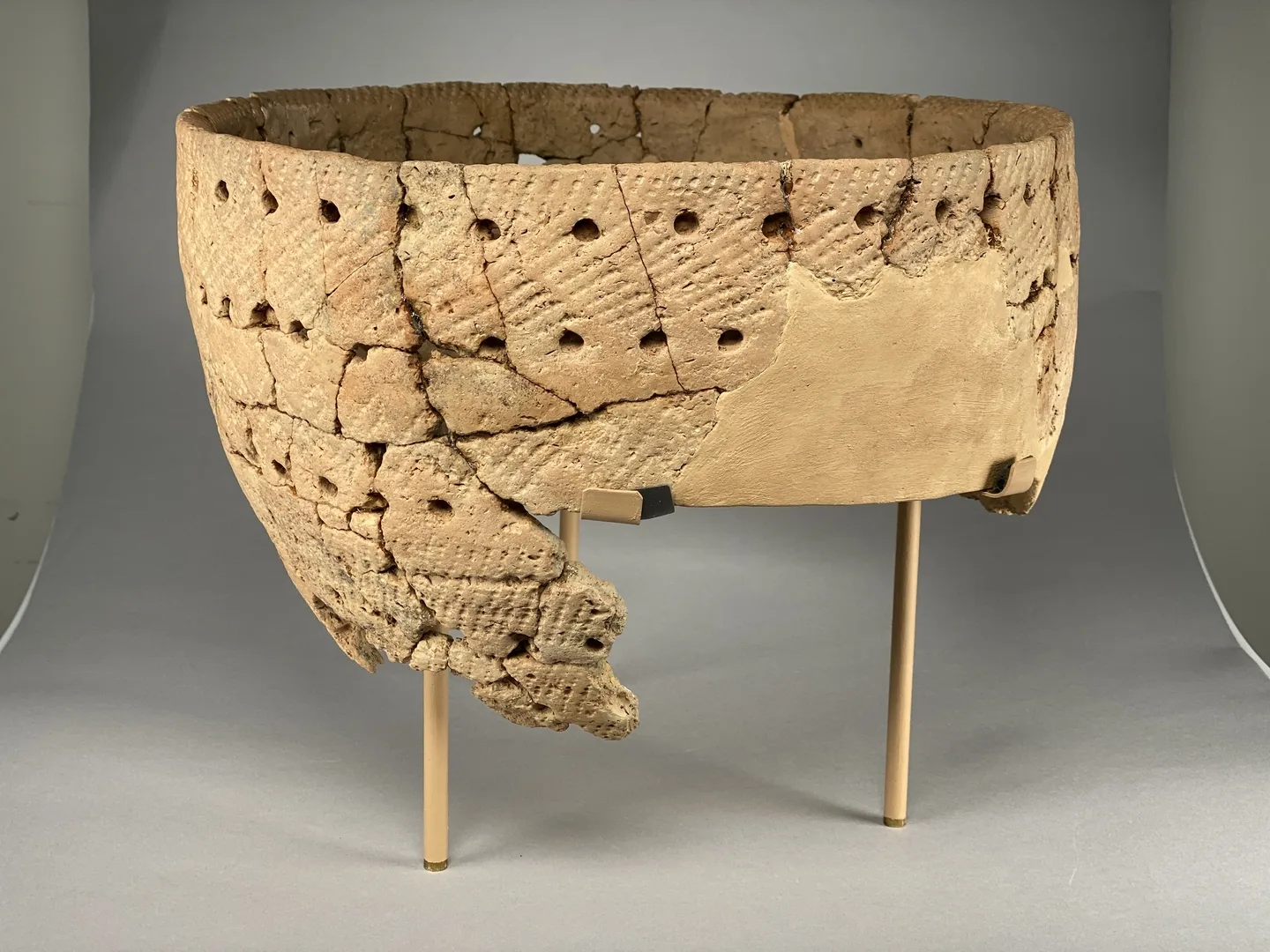Passage graves – monumental Stone Age tombs
Stone Age
12,000 BC – 1700 BC
Bronze Age
1700 BC – 500 BC
Iron Age
500 BC – AD 1100

Around two-thirds of all known passage graves in Sweden are located in Falbygden. A passage grave is built using large stones arranged to form a corridor or passage leading into a central burial chamber. The entire structure was then enclosed by a mound of earth and stone.
One of the most fascinating is the Rössberga grave, where archaeological finds have revealed intriguing details about burial rituals and family ties during the Stone Age.
The stone chamber tomb at Rössberga, about 10 kilometres south of Falköping, is one such grave. These megalithic tombs, including dolmens and passage graves, were constructed during the later phase of the Funnel Beaker Culture, around 3500–2800 BC, which is also when most of the burials occurred. However, isolated secondary burials from later periods are commonly found.
The Rössberga grave was excavated in 1962 by archaeologist Carl Cullberg, who uncovered skeletal remains from what has been estimated to be 128–131 individuals.
DNA reveals family connections within the tomb
One particularly interesting feature of the Rössberga grave is that the large burial chamber had been divided into 17 smaller compartments or niches. DNA analysis suggests that different family groups may have used separate compartments. The deceased were likely placed in a crouched, seated position, though when excavated, the skeletal remains are often found intermingled.
In some passage graves, there is evidence that older bones were rearranged when new individuals were buried. Not only skeletal remains but also various objects have been found in the Rössberga chamber, primarily amber beads, but also bone ornaments, pins, and a few flint tools.
These items may have been burial offerings, though more likely they were part of the individuals' clothing or personal belongings at the time of burial.
Objects and grave offerings
Large quantities of pottery sherds and flint artefacts, including broken axe fragments, four polished stone axes, and some animal bones, have been found at the entrance to the Rössberga tomb. These are thought to be offerings or gifts left for the dead over an extended period.
Nearly all the items appear to have been burned or deliberately broken. The flint, in particular, shows signs of exposure to fire, its surface cracked and turned white, clear evidence of ritual burning.

Flint blade
On view at Historiska museet in the exhibition Forntider 1

Vessel
On view at Historiska museet in the exhibition Forntider 1




